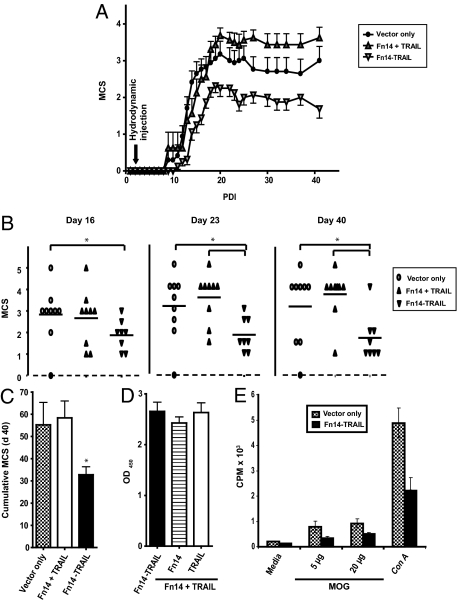Figure 4.
Fn14 and TRAIL in combination do not achieve Fn14-TRAIL’s therapeutic efficacy. A--C: Forty-eight hours after MOG challenge, eight to nine mice per group were hydrodynamically injected with a single dose of Fn14-TRAIL · pSBC21 plasmid (25 μg/mouse) or a single dose of a mixture of Fn14 · pSBC21 and TRAIL · pSBC21 plasmids (25 μg each/mouse). Mean clinical scores for the indicated groups throughout 40 days (A), and on days 16, 23, and 40 (B) are shown. C: Cumulative MCS of indicated groups at day 40 is also shown. The difference between the Fn14-TRAIL-treated versus vector-only control group is statistically significant according to the Mann-Whitney U-test (*P < 0.05), where the differences between the other groups shown and the vector-only group are not significant. D: Serum levels of Fn14-TRAIL were determined by ELISA 30 days after the injection of combined Fn14 · pSBC21 (25 μg) + TRAIL · pSBC21 (25 μg), or Fn14-TRAIL · pSBC21 (25 μg). E: MOG-challenged mice that had been hydrodynamically injected with pSBC21 vector only or Fn14-TRAIL · pSBC21 were sacrificed 43 days after receiving the therapeutic agent. Splenocytes from each mouse were cultured in the presence or absence of different concentrations of MOG38-50 peptide, and proliferation was evaluated as described in the Materials and Methods. Results are shown as mean ± SD from a total of nine mice per group.

